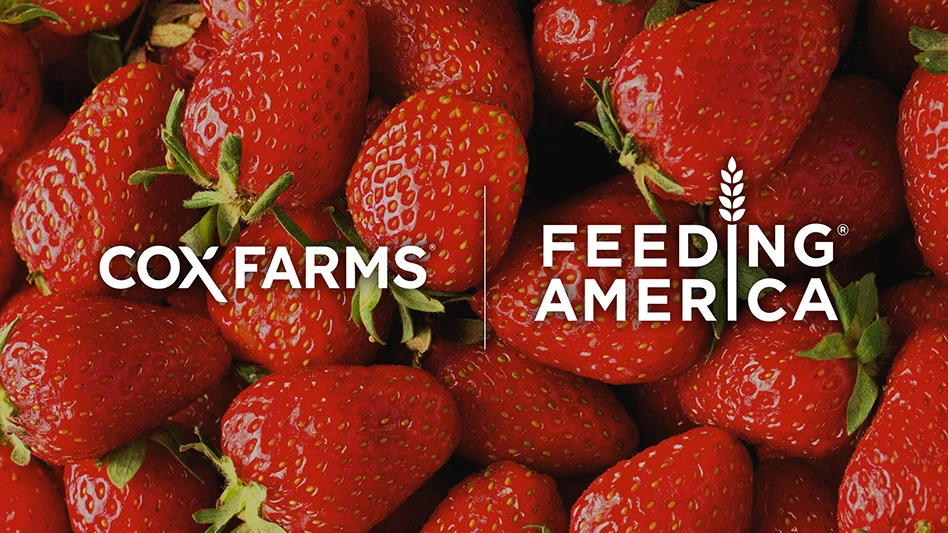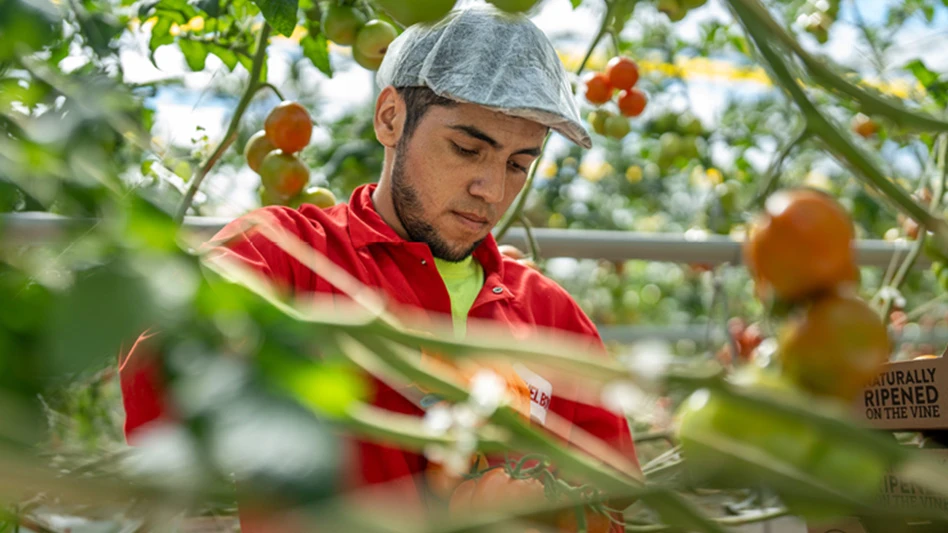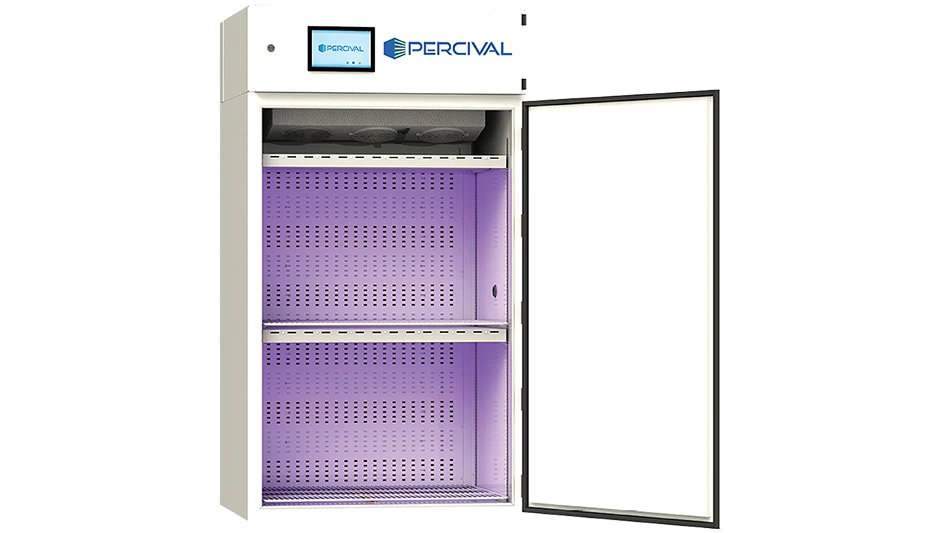
Protecting plants against various diseases that can infect them is critical for successful production, indoors or outdoors. However, with the many diseases that can harm your plants, protecting them can prove challenging.
Some of the most difficult-to-control diseases in greenhouse and nursery operations are Botrytis, soilborne diseases such as Fusarium, and bacterial diseases caused by Pseudomonas spp. and Xanthomonas spp. Unrooted cuttings and young seedlings generally require high humidity to root into the planting media. Unfortunately, this warm, humid environment also provides optimal conditions for these pathogenic spores to germinate, invading wounds and tender plant tissue.
Postiva™ fungicide from Syngenta is an excellent choice for growers looking for a powerful, long-lasting solution for disease control and prevention.
Botrytis
“Botrytis blight, or gray mold, is one of the most common diseases that affects ornamental plants,” says Melissa Barron, ornamental market manager at Syngenta.
It is most problematic in the spring and late fall as it thrives in cool, humid environments. This disease is caused by the fungus Botrytis cinerea — an opportunistic pathogen that can invade and colonize living and dead plant tissue. It is particularly threatening to newly propagated material like germinated seedlings and unrooted cuttings. Plants that have been or will be boxed, stored or transported are also highly susceptible because humidity and ethylene levels contribute to plant stress and susceptibility. Initial infections result in water-soaked spots on foliage and flowers. Once established, gray mold can quickly spread throughout the crop and production area.
This threat is a far-reaching one, too, as, “Almost all plants are susceptible to Botrytis,” according to Dr. Ann Chase of Chase Agricultural Consulting.
Fusarium
Growers often discover Fusarium infections too late because it goes undetected until root and crown damage has already started to occur.
“Notoriously hard to control, Fusarium infections begin in the soil and move upward in the stem, often delaying when growers first notice this disease,” says Barron. “While Fusarium may not be an annual threat, it is very difficult to manage and can cause significant damage.”
To stay ahead of the infection, growers must protect susceptible ornamental crops before symptoms are visible. Fusarium wilt, caused by Fusarium oxysporum¸ occurs more frequently when plants are stressed. Therefore, it is important to pay close attention to proper growing practices and environmental conditions. As the crops develop, growers should monitor for signs of one-sided wilt because the pathogen typically invades one side of the vascular system. Infections will also make foliage in sections of the canopy appear lighter in color and cause wilting from the bottom up.
To complicate the issue, “The [Fusarium] fungus is a saprophyte as well as a pathogen,” says Chase. “It does not have to be infecting a plant to survive and make spores. It can also be very broad in the range of plants it can attack. These reasons make it hard to kill since it can live under many conditions.”
Like Botrytis, you have to keep an eye out for Fusarium on a lot of crops. “Many plants are susceptible to Fusarium, including cyclamen, gladiolus (and other bulb crops), cacti and succulents, dipladenia, and some tropical plants like dracaenas and snake plants to name a few,” says Chase.
Bacterial leaf spot
Bacterial leaf spot pathogens such as Pseudomonas spp. and Xanthomonas spp. typically do not pose a serious threat to the overall health of the plant, but they can negatively affect the overall appearance. Warmer temperatures, along with misting in propagation or rainfall and nightly dew, create optimal conditions for bacterial leaf spots to develop. Bacterial leaf spots can hide in the lower and interior canopy of plants at first before spreading to the outer portions of the foliage. This can occur because of wet foliage, reduced air movement and higher relative humidity. Bacterial leaf spots initially appear as water-soaked spots that are more angular in shape. This tissue will eventually turn dark and have a greasy appearance while also displaying a yellow border around the lesion.
Like Fusarium and Botrytis, bacterial leaf spots can threaten many different plants. “Bacterial leaf spots are too broad a group to list what plants are susceptible,” Chase explains. “There are many different species of Xanthomonas, Pseudomonas, Acidovorax and others in this category.”
Luckily, growers have an effective tool to deal with these pervasive threats: Postiva fungicide.
The Postiva difference
Compared to other fungicides, Postiva has some key, unique traits. “Postiva contains two active ingredients, ADEPIDYN® technology plus difenoconazole, which makes this combination unique to the ornamental market in FRAC Groups 7 and 3,” says Barron.
In fact, emphasized Chase, Postiva “is the only fungicide currently labeled with a FRAC 3 and FRAC 7.” Additionally, Postiva is broad-spectrum, with Chase adding that it is “very safe on a wide variety of crops.” Furthermore, Barron says the fungicide “provides a much-needed missing link in fungicide programs by offering incredibly long-lasting protection against many of the most challenging ornamental diseases.”
Postiva delivers results, with Barron describing the brand’s performance in trials against Botrytis, Fusarium and bacterial leaf spots using one word: “Outstanding.”
“In trials and in the hands of growers, Postiva has demonstrated a comprehensive plant protection treatment against fungal and bacterial pathogens,” Barron elaborates.
Likewise, Chase sees “excellent, safe, broad-spectrum control of a wide range of foliar and soilborne diseases” when Postiva is used. “It has been effective on fungal leaf spots, as well as some bacterial leaf spots,” she explains.
“Postiva has proven to control Fusarium more consistently than other available treatments,” says Barron. “Postiva offers outstanding efficacy and long-lasting control of Fusarium spp. by delivering multiple active ingredients in a cost-effective format.”
Chase concurs, saying, “I have never seen anything as effective on Fusarium diseases as Postiva.”

Prevention — the best cure
When it comes to managing damaging diseases such as bacterial leaf spots, there’s one primary concern: preventing them from happening in the first place. “Because there are no curative products on the market for bacterial leaf spots, I believe growers will agree with me that prevention is extremely important,” Barron says.
Chase echoes Barron’s comments. “Preventive is always more effective than curative,” she explains. “If you use the right product before disease occurs, you can often use a lower rate and minimize applications. Treating preventively is always more cost-effective than curative.”
So, does Postiva do a great job in suppressing bacterial spots? Yes. “I’m pleased to share that we have seen excellent suppression of bacterial pathogens caused by Xanthomonas spp. and Pseudomonas spp. with Postiva,” Barron says. “Growers now have an innovative tool for helping keep bacterial infections out of production.”
Rotating fungicides for best results
The unique combination of active ingredients in Postiva and their complementary strengths, also make it an excellent rotation partner to diversify disease control programs.
“Not only does Postiva provide strong protection and reliable control of diseases, but when used in rotation with Mural®, Palladium® and Daconil® brand fungicides, you’re getting comprehensive, powerful, season-long disease prevention,” says Barron. “Postiva is an excellent rotation partner to diversify programs for more comprehensive and broader-spectrum control. There are so many benefits of adding Postiva to an agronomic program: powerful active ingredients, broadened spectrum of disease control, custom ratios for targeting key diseases and timings, and flexible application methods fit for any operation.”
Such rotation is important for preventing resistance development. “Botrytis has high risk for developing fungicide resistance, so it is important to follow a rotation program that includes different modes of action,” Barron explains.
“Using fungicides in the same FRAC Group without rotation leads to resistance development in the fungi or bacteria,” Chase adds. “Then the entire FRAC Group won’t be effective — not just the fungicide that was over-used.”
Another piece of advice from Chase: “Never use a lower-than-labeled rate since that also leads to resistance development.”
Flexible application to your plants
On top of all the advantages of using Postiva to protect crops from pathogens, yet another advantage is the flexibility that Postiva offers, which is one of its greatest strengths. Postiva is labeled for use in greenhouses, nurseries (including field- and container-grown plants and conifer nurseries), as well as residential and commercial landscapes and interior plantscapes.
“Growers can apply it as a spray, including aerial application, drench, chemigation and through automated cold fogging in greenhouses,” Barron says. Postiva also moves quickly into the wax layer of the plant, creating a reliable, rainfast barrier of protection.
“With a wide range of application rates, Postiva can be applied on many ornamental crops — such as cut flowers, bulb crops and evergreens — as well as pot and bedding plants, foliage plants, ornamental trees and shrubs, succulents, non-bearing fruit and nut plants, and more,” Barron adds. “We see excellent plant safety and tank-mix compatibility with Postiva, as well.” Considering how many different kinds of plants that Fusarium, Botrytis and leaf spots threaten, this flexibility is crucial.
“A colleague here at Syngenta likes to say, ‘if you start clean, you stay clean,’ and I couldn’t agree more,” Barron says. “Our motto for Postiva is ‘Perfecting Your Program,’ and I cannot think of a better way to describe it.”

Explore the July 2023 Issue
Check out more from this issue and find your next story to read.
Latest from Produce Grower
- The Growth Industry Episode 1: State of the Horticulture Industry
- FDA to Hold Webinar on Updated ‘Healthy’ Claim
- VIDEO: Growing media for strawberries grown under different production systems
- Selected for success
- International Fresh Produce Association Expands Food Safety Team
- USDA Announces Presidential Appointments
- Food safety starts with plugs
- Water treatment strategies





